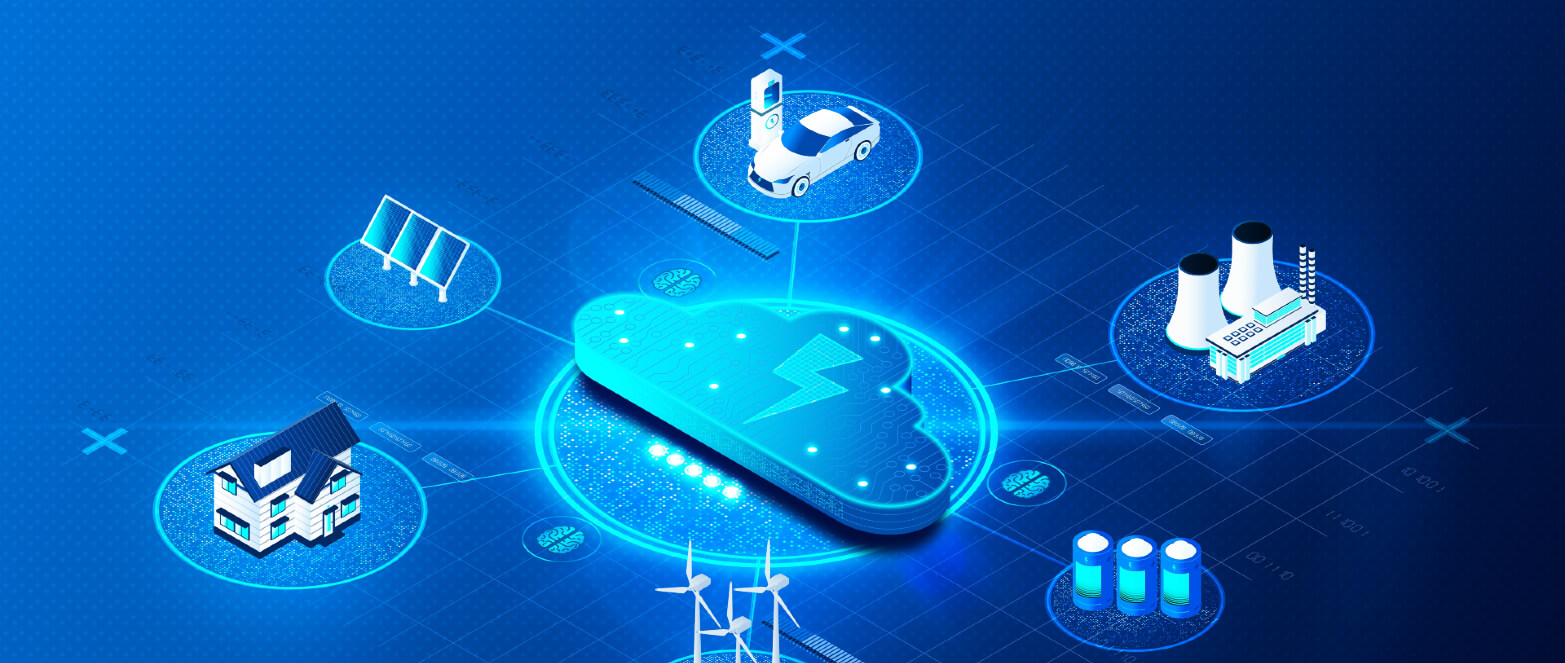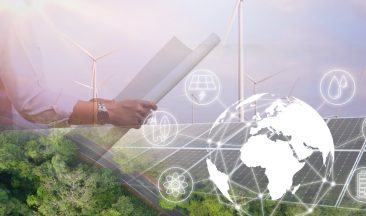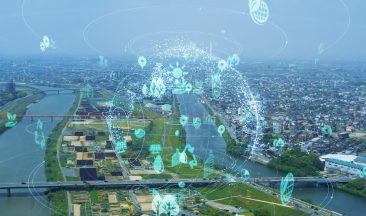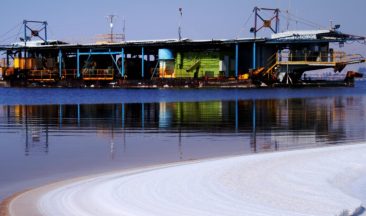As we experience a wider push towards clean renewable energy and decarbonization, there is increasing interest in the concept of industrial microgrids. This article takes a closer look at the benefits of introducing microgrid solutions for industrial sites. It will also explore how ICL is leading the way in developing energy storage in microgrids in its plants.
The Importance of Microgrids for Industrial Sites
The commodity crisis and conflict in Ukraine have overturned decades of complacent assumptions about reliable supplies of cheap energy for industry and manufacturing. Today’s industrial landscape faces the greatest uncertainties for a generation and is also under political and societal pressure to implement radical decarbonization and switch to sustainable green energy supplies.
Mr. Yaniv Steiner, Head of Energy Management unit at ICL Israel tells us “Energy reliability and cost-efficiency have always been concerns for any business, and particularly for companies that operate plants around the clock. Any disruption to energy supplies for a plant that runs 24/7/365 can be disastrous. Even a simple power failure, or sudden rise in energy costs, can cause knock-on effects that result in exponential damage to an individual business, or even to an entire plant/site.
Traditional centralized power grids are seen as increasingly unreliable by industrial facilities that need a guaranteed power supply. Factors that can disrupt the national grid include surges in public energy demands due to extreme weather conditions, pressure on the fuel supply chain, and damage to the infrastructure. Any of these issues can temporarily overwhelm national grids and leave industrial plants paralyzed.”
Renewable energy trends are transforming how modern industrialized societies function, but many national grids are (at least in part) still dependent on fossil fuels. This can be a problem for companies striving for zero net carbon by 2050. Companies that need to actively demonstrate successful decarbonization are increasingly interested in the renewable energy potential of microgrids for industrial sites.
What is a Microgrid?
The term ‘micro grid’ is potentially confusing. Many people automatically assume that a microgrid is a tiny power network. A better terminology might be ‘localized grid’ or ‘independent grid’. A microgrid isn’t necessarily small.
Take, for example, the microgrid that will eventually power ICL’s Green Sdom Initiative.
Mr. Steiner, mentions that this microgrid will need to deliver approximately 300 megawatts (power and heat) an hour to drive DSW site’s plants – that’s a great amount of energy needed 24/7. Future microgrids might supply the power requirements of entire towns or neighborhoods.
- Microgrids are localized
- They operate within defined electrical boundaries
- Microgrids can operate in conjunction with other grids, or in an island mode.
Genuine industrial microgrids can continue to supply electrical power to their designated consumers even if there is a significant disruption (or no connection whatsoever) to the national grid. Under optimal local conditions, a microgrid can sell its own surplus power to the national grid.
The future of microgrids in the Western industrialized world (and many of its East Asian counterparts) is predicated on renewable energy sources that facilitate sustainability and decarbonization. Renewable energy microgrids will substantially reduce environmental damage and reduce dependency on fossil fuels.
The environmental benefits are compelling. Advocates of commercial and industrial microgrids have to make a stronger economic case for the transition. The real challenge is to make the development of renewable energy microgrids affordable and to make a quantum leap forward in the challenges of energy storage in microgrids. It is the lack of proven, low-cost energy storage solutions that are the biggest obstacle to a strategic switch to renewable energy microgrids.
What is a Hybrid MicroGrid?
A microgrid can be powered by a single energy source like a coal-fired generator or an oil, natural gas, renewable energy source, or diesel-powered facility. This reliance on a single fuel source traditionally had both advantages and disadvantages. On the plus side, infrastructure maintenance and the supply of spare parts were simplified (an important consideration for private companies). There were however three significant problems:
- The cost of electricity correlated directly to the cost of fuel.
- The reliability of the microgrid depended on a single power source.
- The environmental cost of burning fossil fuels was increasingly unsustainable.
A hybrid microgrid addresses these issues by diversifying its power sources and allowing for flexibility and adaptability. The exact definition of what is a hybrid microgrid can vary widely because they are built around local energy resources. Hybrid microgrid solutions for industrial sites can include any combination of solar PV energy, wind energy, tidal power, geothermal energy, hydrogen gas energy, and other localized innovations. Let us dive into some of the advantages of Microgrids with Mr. Yaniv Steiner.
Yaniv, please tell us, what are some advantages of a hybrid microgrid?
- If a power source fails, the grid can access other sources. Some energy sources are intermittent e.g. solar PV panels will only generate energy when there is direct sunlight. A hybrid grid makes intermittent energy sources highly viable as components within an energy network.
- Well-designed hybrid commercial and industrial microgrids are environmentally friendly. They allow rapid decarbonization and significant progress towards carbon net zero.
- Once a company has made a successful transition to hybrid microgrids for its industrial sites, it can potentially achieve significant reductions in its energy costs. It is also easier to implement accurate medium-long-term financial planning when you don’t have to factor in potential rises in energy prices.
- It is possible to sell surplus energy back to the national grid, or to other microgrids, and offset your own production costs. The future of microgrids is expected to include growth in energy enterprises. Advances in bromine-based energy storage could easily turn stored electricity into a valuable and easily transferable commodity.
- Companies that operate sustainable hybrid microgrids using green energy sources are more likely to satisfy contractual ESG requirements and enjoy a major advantage when it comes to building good community relations, attracting new investors, and recruiting high-caliber employees.
The Challenges of Achieving Energy Independence
The environmental case for a global transition to commercial and industrial microgrids is self-evident. There are also powerful strategic arguments for energy independence and a complete break from dependence on imported fossil fuels.
The problem is that there are few templates available for achieving cost-effective microgrid solutions for industrial sites. The concept is relatively new, and, in many cases, the technology for energy storage in microgrids is still not mature enough.
There are a number of conditions that will have to be met before we see major momentum in the transition to microgrids. Many of these conditions are interdependent.
- Readily available examples of companies developing their own microgrids that other companies can either copy directly or draw inspiration from.
- Developments in the use of hydrogen as a component (and dependable reserve energy source) in hybrid microgrids.
- Innovations in cost-effective and safe energy storage solutions.
- Widespread government backing and assistance in the development of both commercial and industrial microgrids.
- Greater public understanding and demand for sustainable energy from microgrids.
More on the subject:
The Green Sdom Initiative: Fighting Climate Change with Clean Energy in ICL
Factories
ICL’s Decarbonization Journey: Steering Towards a Sustainable Future
Sustainability – Not Just Another Catchphrase!
ICL: A Micro Grid Pioneer
ICL has a long-standing commitment to decarbonization. The company was initially committed to achieving zero net carbon by 2050 but then signed up to the SBTI (Science Based Targets Initiative) goal of 50% carbon reduction by 2030. As part of its wider journey towards sustainability and environmental responsibility, ICL quickly realized the need for renewable energy microgrids to supply its own industrial sites while lowering its carbon footprint.
ICL made a bold decision to develop a new industrial microgrid to power its massive Negev Desert plants. The Green Sdom Initiative is a groundbreaking venture that will eventually bring renewable energy to ICL factories and reduce dependence on the national grid.
ICL is committed to achieving energy independence, transforming the company’s impact on the natural environment, and substantially reducing its own energy costs. Crucially, ICL intends the Green Sdom Initiative to function as a template for other businesses that want to make a similar transition in the future. This sharing of knowledge and experience will be key to the future of microgrids.
Since its foundation in a remote desert outpost over a hundred years ago, ICL has always been a pioneer. It has also focused intensely on research and development and the practical application of new technologies. The company is now leading the way in utilizing renewable energy on an industrial scale. The adoption of industrial microgrids means that ICL can operate cleanly and harmoniously in every natural environment around the world.








